The iPhone 13 series is official and it has been revealed in full at the 2021 September 14 Apple event. We've got every detail you need to know about the upcoming smartphone series.
This year's models include the iPhone 13, iPhone 13 mini, iPhone 13 Pro and iPhone 13 Pro Max, and below you'll find full details of all of them, including their prices, design, and specs.
Read on below to learn everything we know so far about the next generation of iPhone smartphones.
iPhone 13 series: cut to the chase
- What is it? Apple's next big series of smartphones
- When is it out? September 24, announced September 14
- How much will it cost? Starts at $699 / £679 / AU$1,199 for cheapest model
iPhone 13 release date and price
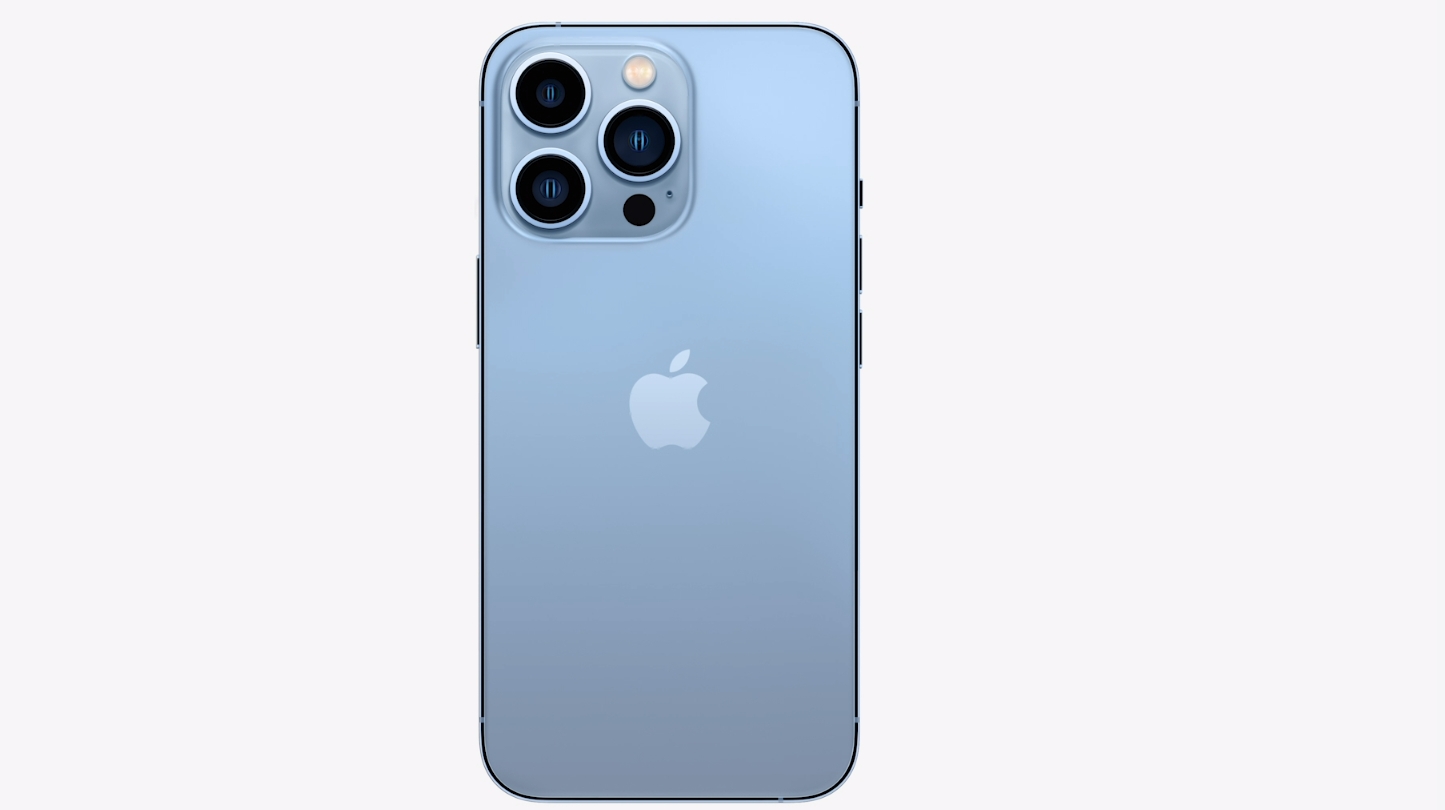
The iPhone 13 series was confirmed on September 14 at the company's big launch event, and you'll be able to pre-order each of the handsets on Friday September 17.
September 24 is the iPhone 13 series release date, and unlike 2020's iPhone 12 series you'll be able to buy each of these handsets on the same day.
The iPhone 13 starts at $799, and the iPhone 13 mini starts at $699. That's for a 128GB of storage, which matches the price of the 64GB variant of the iPhone 12 last year.
The iPhone 13 Pro starts at $999, while the iPhone 13 Pro Max starts at $1,099. Those prices are also for 128GB models, and they match what we saw last year with the iPhone 12 series.
iPhone 13 design and display
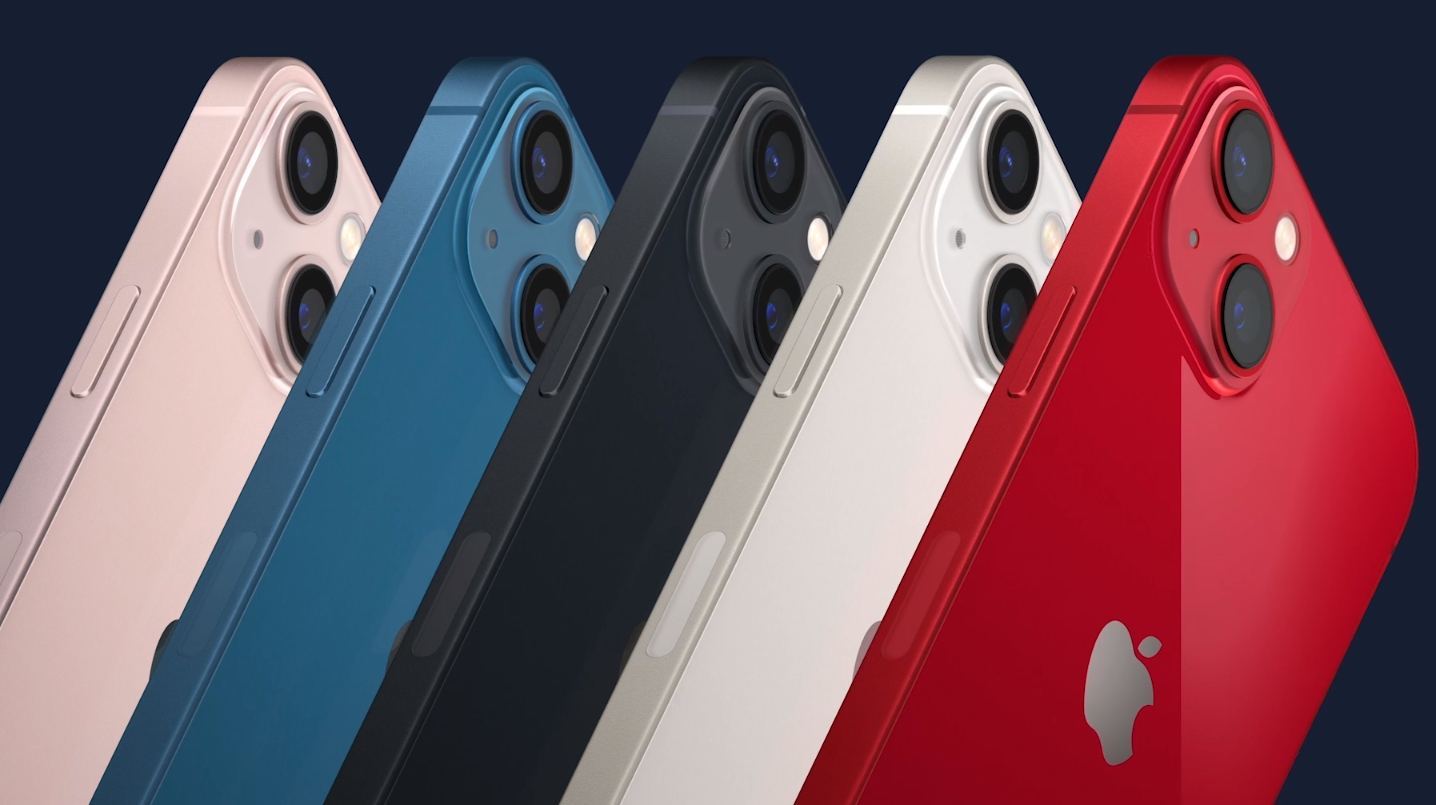
The iPhone 13 features a flat edge design, it comes with the Ceramic shield we saw on the iPhone 12 series and it's also IP68 dust and water resistant (like most modern smartphones).
There are five new colors, which are Pink, Blue, Midnight, Starlight and Product Red.
The design is largely similar to the iPhone 12 series, so if you own one of those phones you'll likely know what you've got here. The notch is slightly smaller - Apple says it's 20% smaller - so there's a bit more space on the screen.
As for the display, the iPhone 13 features a 6.1-inch display while the iPhone 13 mini features a 5.4-inch display. They're both Super Retina XDR displays, which use Apple's own custom OLED technology.
Each phone still features a 60Hz screen refresh rate, which matches with the rumors.
Now onto the iPhone 13 Pro and iPhone 13 Pro Max. Both handsets come in graphite, gold, silver or a sierra blue. That last shade is new, and it's one of the boldest colors we've seen on a Pro iPhone.
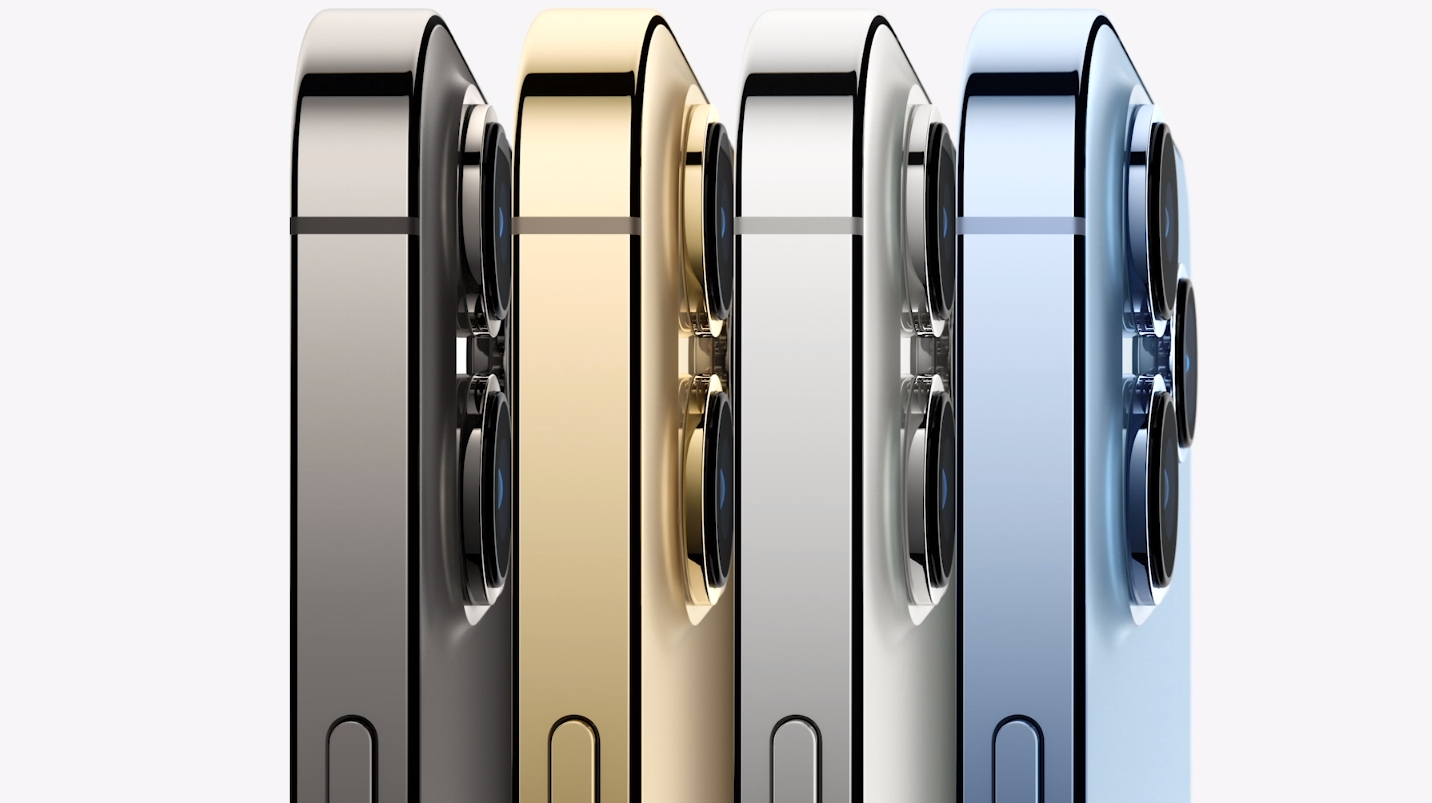
The larger design is very similar to the iPhone 12 Pro and iPhone 12 Pro Max, but there are a few changes with some new stainless steel bands around the edges of the handset.
The iPhone 13 Pro duo comes with a new Super Retina XDR display that has 1000 nit brightness peak outdoors, and it features a 120Hz refresh rate.
This is the first time we've seen a super smooth refresh rate on an iPhone. It means images will appear smoother under your finger, such as when you're scrolling through your social media feeds or reading an article.
Apple's own technology adapts the frame rate depending on what you're looking at on your phone. This is similar to technology we've seen previously on the iPad series, and many Android phones already include this.
MagSafe also makes a return on all the iPhone 13 series devices, so you'll be able to use any accessories you bought last year with your iPhone 12. Plus, Apple has introduced more accessories as well.
iPhone 13 camera
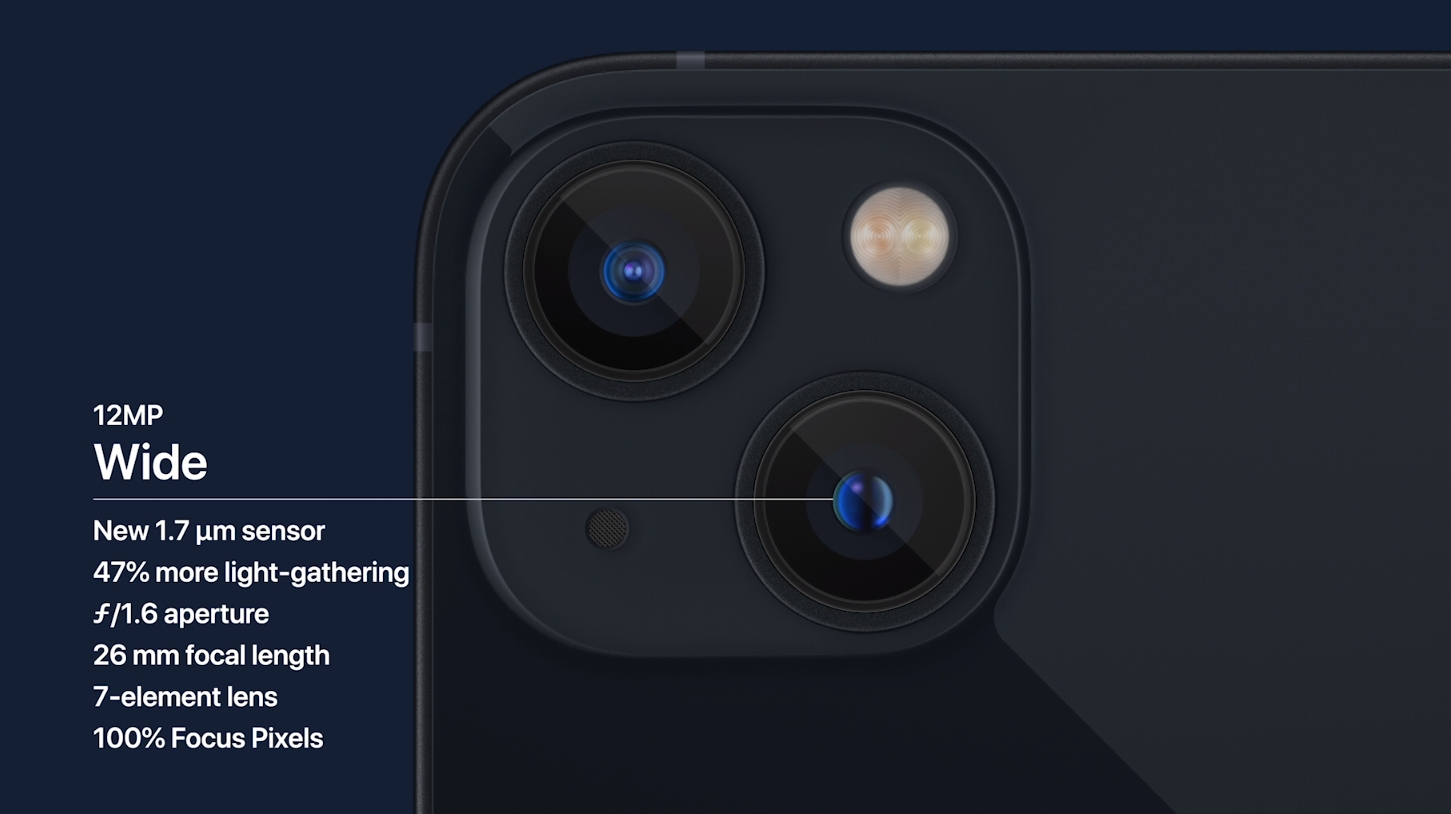
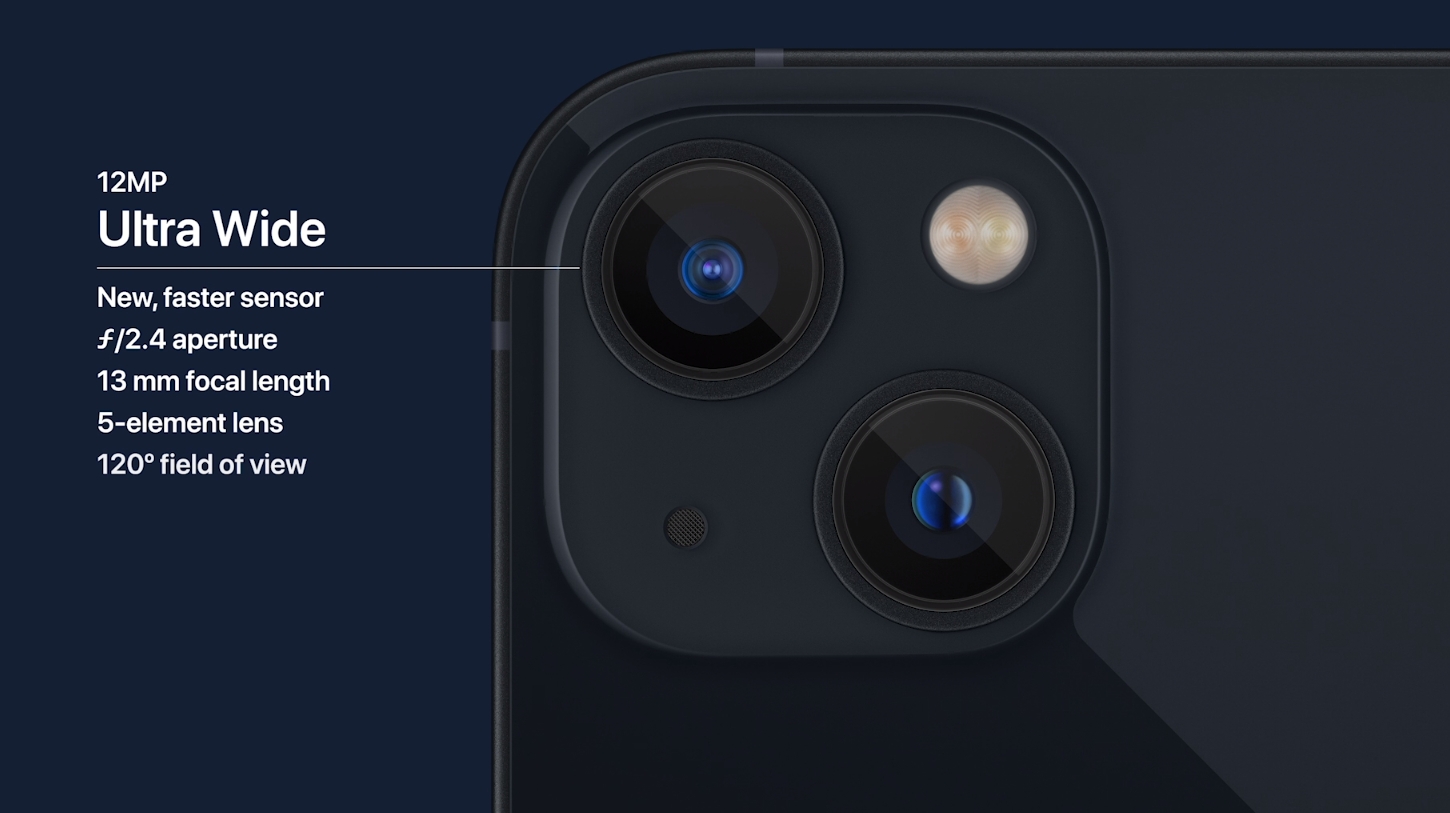
The iPhone 13's camera block has a new design, with the lenses arranged diagonally for the first time, rather than vertically.
There's a 12MP wide camera, and a 12MP ultra-wide shooter. Both feature new sensors, so Apple believes this will have better photography than your iPhone 12 is capable of.
The wide camera has an aperture of f/1.6 and the ultra-wide camera has an f/2.4 aperture.
As for the iPhone 13 Pro duo, you'll get a three 12MP cameras. There's a wide camera with an f/1.5 aperture, an ultra wide with an f/1.8 aperture and a telephoto with an f/2.8 aperture.
Each is capable of 3x optical zoom, 2x optical zoom out and 6x optical zoom range, with digital zoom up to 15z also available.
Apple is bringing ProRes video to the iPhone 13 Pro and Pro Max "later this year". This video format, which is already used by many filmmakers and first arrived back in 2007, gives video shooters more efficient encoding to make editing in apps like Final Cut Pro faster and less processor intensive.
It lets you record 4K/30p video in the ProRes format within the camera app, and joins the iPhone Pro line's existing ability to record in Dolby Vision.
iPhone 13 specs and performance
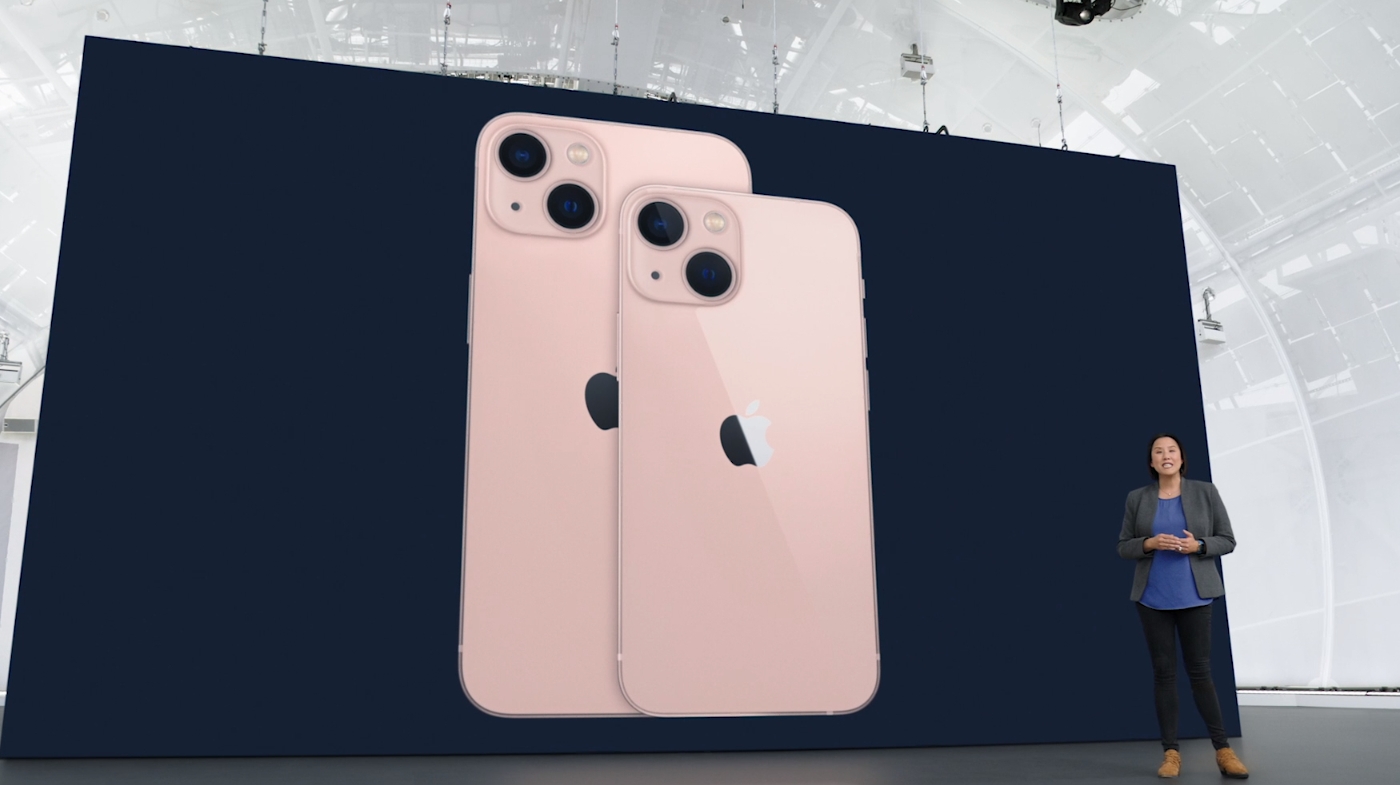
The iPhone 13 series all come with A15 Bionic chipset inside, but we've yet to learn much about what that will be able to do. We'll likely have to wait until we can use the phone to know much firm information about it.
All four of these handsets are 5G compatible, as was the iPhone 12 series.
You'll have the option of 128GB, 256GB or 512GB of storage on the iPhone 13 duo. Huzzah, Apple has finally got rid of its 64GB option for its flagship iPhones, and that means more storage on the cheapest variant.
If you're looking for a Pro iPhone, you'll have the option of 128GB, 256GB, 512GB or - a new addition for iPhone - a 1TB model. We dread to think what that model is set to cost you.
iPhone 13 battery life
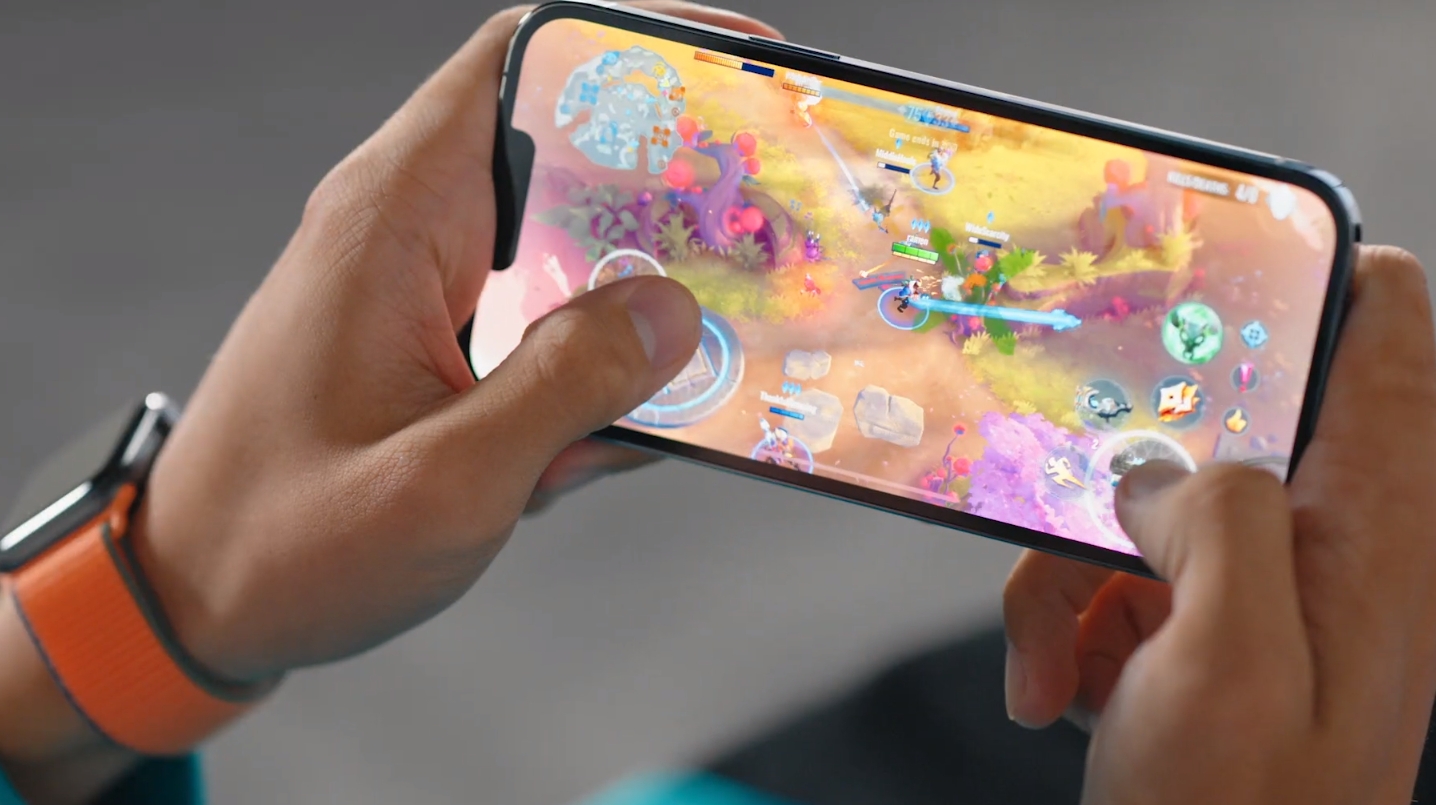
According to Apple, the iPhone 13 handsets will all feature better battery life. The iPhone 13 mini and iPhone 13 Pro will last 90 minutes longer than the iPhone 12 mini and iPhone 13 Pro, respectively.
The iPhone 13 and iPhone 13 Pro Max will last 2.5 hours longer than an iPhone 12 or iPhone 12 Pro Max. The iPhone 13 Pro Max also has the longest battery life ever seen on an iPhone, according to Apple.
This has mostly been achieved by a variety of optimizations through the A15 chipset and iOS 15 software. Apple has yet to confirm the size of the battery in the iPhone 13 models, and it's unlikely we'll know that until someone opens up a handset and finds out manually.
As on the iPhone 12 series, you won't get a charger in the box with any iPhone 13 model. You'll want to use your existing charger, buy one separately or using its wireless charging capabilities.
That wireless charging is up to 15 watts on all four models, which will give you a respectable speed but won't match that of what some Android phones are capable of doing.
from TechRadar - All the latest technology news https://ift.tt/3k9VhvV
